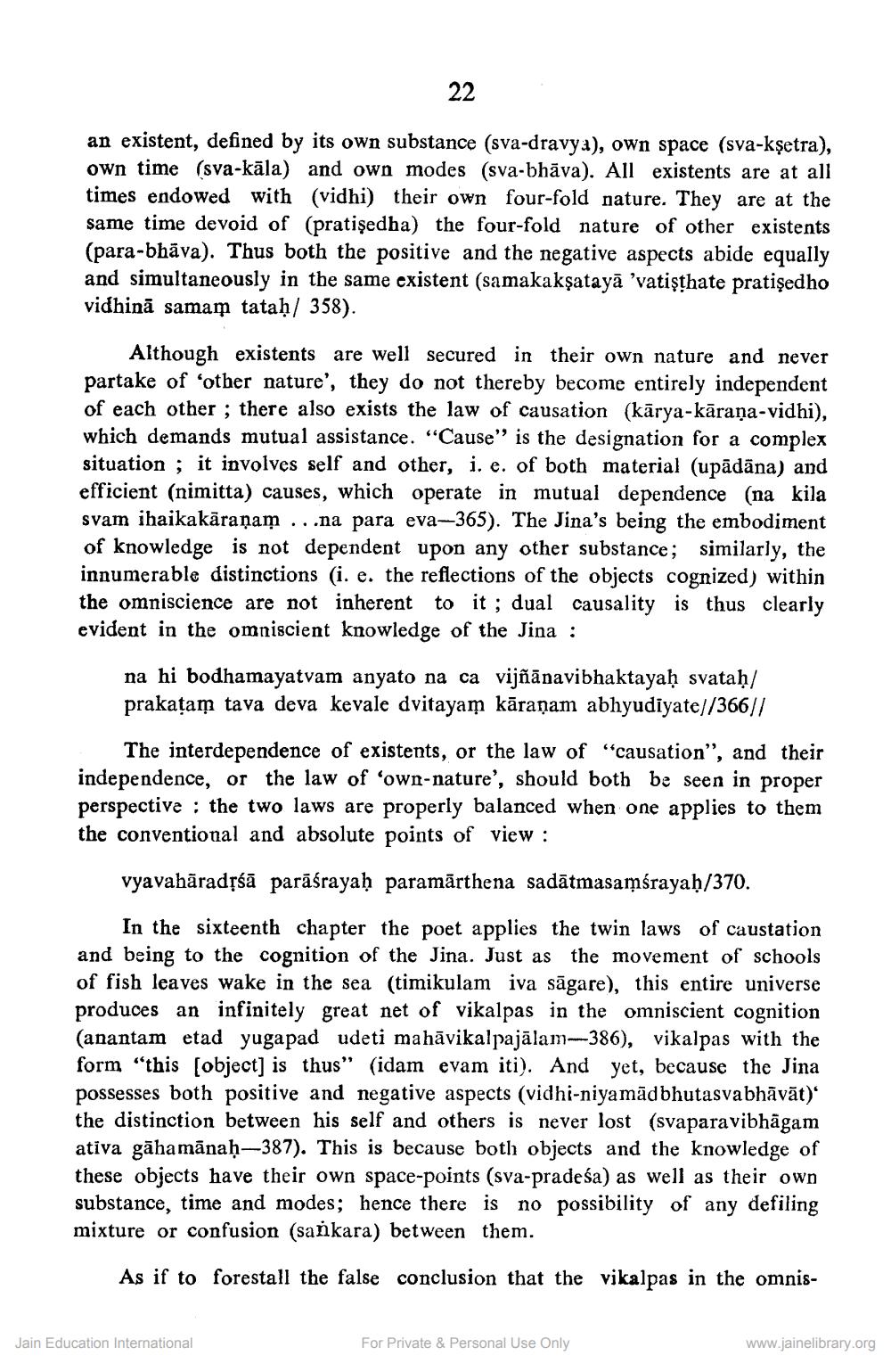________________
an existent, defined by its own substance (sva-dravya), own space (sva-kşetra), own time (sva-kāla) and own modes (sva-bhāva). All existents are at all times endowed with (vidhi) their own four-fold nature. They are at the same time devoid of (pratişedha) the four-fold nature of other existents (para-bhāva). Thus both the positive and the negative aspects abide equally and simultaneously in the same existent (samakakşatayā 'vatişthate pratişedho vidhinā samam tataḥ/ 358).
Although existents are well secured in their own nature and never partake of 'other nature', they do not thereby become entirely independent of each other, there also exists the law of causation (kārya-kāraņa-vidhi), which demands mutual assistance. "Cause" is the designation for a complex situation ; it involves self and other, i. e. of both material (upādāna) and efficient (nimitta) causes, which operate in mutual dependence (na kila svam ihaikakāraṇam ...na para eva-365). The Jina's being the embodiment of knowledge is not dependent upon any other substance: similar innumerable distinctions (i. e. the reflections of the objects cognized) within the omniscience are not inherent to it; dual causality is thus clearly evident in the omniscient knowledge of the Jina:
na hi bodhamayatvam anyato na ca vijñānavibhaktayaḥ svataḥ| prakatam tava deva kevale dvitayam kāraṇam abhyudiyate//366//
The interdependence of existents, or the law of "causation", and their independence, or the law of 'own-nature', should both be seen in proper perspective : the two laws are properly balanced when one applies to them the conventional and absolute points of view :
vyavahāradỊśā parāśrayaḥ paramārthena sadātmasamśrayaḥ/370.
In the sixteenth chapter the poet applies the twin laws of caustation and being to the cognition of the Jina. Just as the movement of schools of fish leaves wake in the sea (timikulam iva sägare), this entire universe produces an infinitely great net of vikalpas in the omniscient cognition (anantam etad yugapad udeti mahāvikalpajālam-386), vikalpas with the form "this (object) is thus" (idam evam iti). And yet, because the Jina possesses both positive and negative aspects (vidhi-niyamādbhutasvabhāvāt)' the distinction between his self and others is never lost (svaparavibhāgam ativa gāhamānaḥ-387). This is because both objects and the knowledge of these objects have their own space-points (sva-pradeśa) as well as their own substance, time and modes; hence there is no possibility of any defiling mixture or confusion (sankara) between them.
As if to forestall the false conclusion that the vikalpas in the omnis
Jain Education International
For Private & Personal Use Only
www.jainelibrary.org




